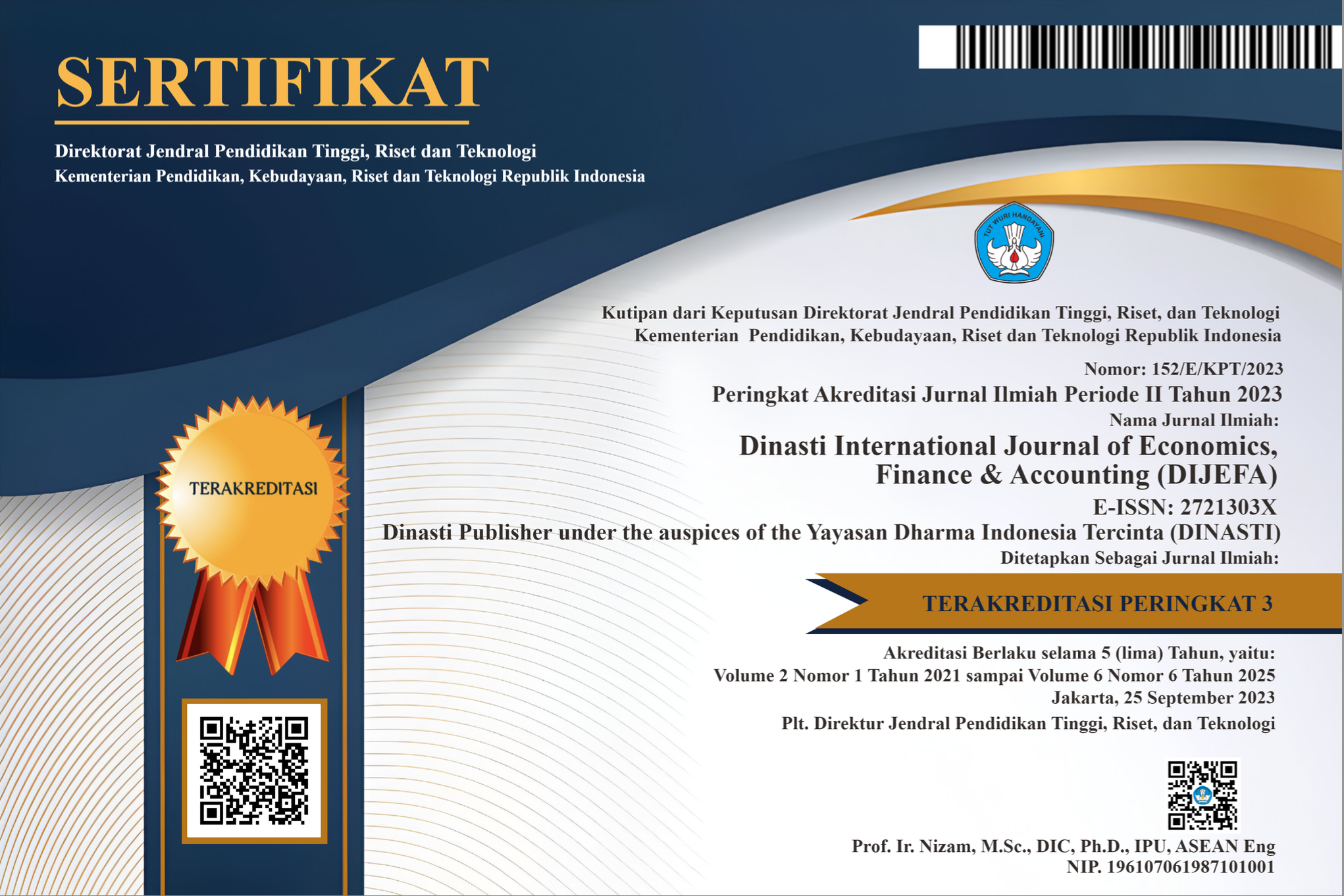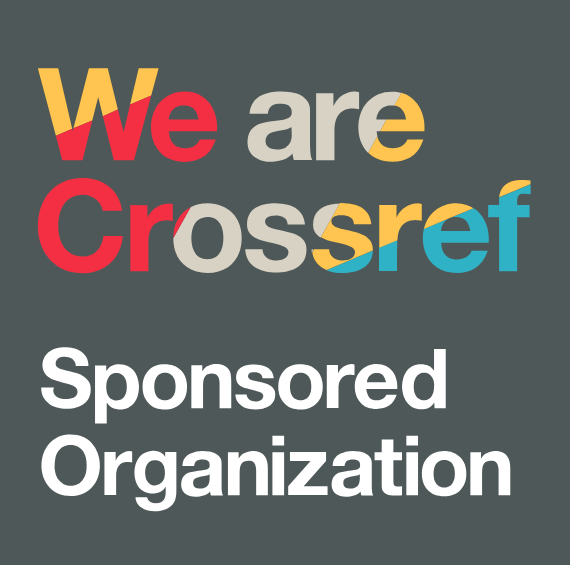THE ROLE OF CUSTOMER INNOVATION AND ORIENTATION ON THE BUSINESS PERFORMANCE OF PT PEGADAIAN (PERSERO) SUMATERA AREA OF SOUTH SECTION
DOI:
https://doi.org/10.38035/dijefa.v1i2.308Keywords:
Customer Orientation, Innovation, Business Performance.Abstract
Facing increasingly stringent global markets, PT Pegadaian (Persero) continues to innovate various products and services, but its business performance has not yet satisfied various parties. The purpose of this study is to determine the role of innovation in the relationship between customer orientation and business performance. Another objective is to obtain empirical evidence of the influence of customer orientation both directly and indirectly on the business performance of PT Pegadaian (Persero). The design of this study uses a quantitative approach with a survey method. The research model is confirmatory, so the data analysis technique used is the structural equation model (SEM) with the application of the LISREL program. The study population was all customers of PT. Pegadaian (Persero) in the Southern Sumatra Region. The total sample of 120 respondents taken by accidental sampling. The results of this study indicate that the direct influence of customer orientation on business performance is smaller than the indirect effect. This shows that the innovation variable is a good mediator for the relationship between customer orientation and business performance. The better customer orientation is done, it will increase innovation, which in turn will affect the business performance of PT Pegadaian (Persero). The managerial implication of this research is the need for PT Pegadaian, especially in the marketing division to continue to carry out customer-oriented marketing strategies with various innovations that customers need.
References
Conduit, Margaret Jekanyika Matanda & Felix T. Mavondo (2014) Balancing the act: the implications of jointly pursuing internal customer orientation and external customer orientation, Journal of Marketing Management, 30:13-14, 1320-1352, DOI: 10.1080/0267257X.2014.909513
Darsono, Lincen Indahwati, (2010). Determinan Kreativitas dan Implikasinya Terhadap Kinerja: Sebuah Studi Empiris Di Dunia Pendidikan Tinggi, Unika Widya Mandala, Surabaya.
Freeman, Alan (2008). Culture, Creativity and Innovation In The Internet Age, Conference On IPR at Birkbeck College, London
Kemp.R.G.M ; Folkeringa.M; De Jong.J.P.J; and Wubben.E.F.M, 2003. Innovatioan and Firm Performance, Research Report H200207, SCALES (Scientific Analysis of Enterpreneurship and SMEs, ISBN: 90-371-0875-X, Order Number: H200207, Netherlands Ministery of Economic Affairs.
Man, J. 2001. Creating Innovation, work study, vol.50. No.6. pp.229-233.
Mavondo, F. T., Chimhanzi, J., & Stewart, J. (2005). Learning orientation and market orientation: Relationship with innovation, human resource practices and performance. European Journal of Marketing, 39(11–12), 1235–1263. https://doi.org/10.1108/03090560510623244
Porter, M. E. (1998). Clusters and the New Economics of Competition. Harvard Business Review, (November-December).
Wheelen, T. L., & Hunger, J. D. (2015). Strategic Management and Business Policy Globalozation, Innovation and Sustainability.
Wulandari, P. (2014). Pengaruh Orientasi Pelanggan, Orientasi Pembelajaran Dan Motivasi Intrinsik Terhadap Penjualan Adaptif (Studi kasus PT. Oriflame Yogyakarta). Jurnal Manajemen, 4(1), 1–15. https://doi.org/10.4324/9781315853178
Rademakers, Martijn (2005), Corporate Universities : driving force of knowledge innovation, Journal of workplace Learning; 2005; 17, 1/2; ABI/INFORM Global,pg.59 1.
Richard Florida, (2002). Creativity, Desaign and Business Performance, DTI Economics Paper No.15,
Stobbeleir, Katleen; et.al. 2010. From Creativity To Success: Barriers and Critical Success Factors In The Creative Process. Vlerick Leuven Gent Management School, e-mail: [email protected]. 2010. pp.1 -26
Downloads
Published
How to Cite
Issue
Section
License
Authors who publish their manuscripts in this journal agree to the following conditions:
- The copyright on each article belongs to the author(s).
- The author acknowledges that the Dinasti International Journal of Economics, Finance & Accounting (DIJEFA) has the right to be the first to publish with a Creative Commons Attribution 4.0 International license (Attribution 4.0 International (CC BY 4.0).
- Authors can submit articles separately, arrange for the non-exclusive distribution of manuscripts that have been published in this journal into other versions (e.g., sent to the author's institutional repository, publication into books, etc.), by acknowledging that the manuscript has been published for the first time in the Dinasti International Journal of Economics, Finance & Accounting (DIJEFA).


























































